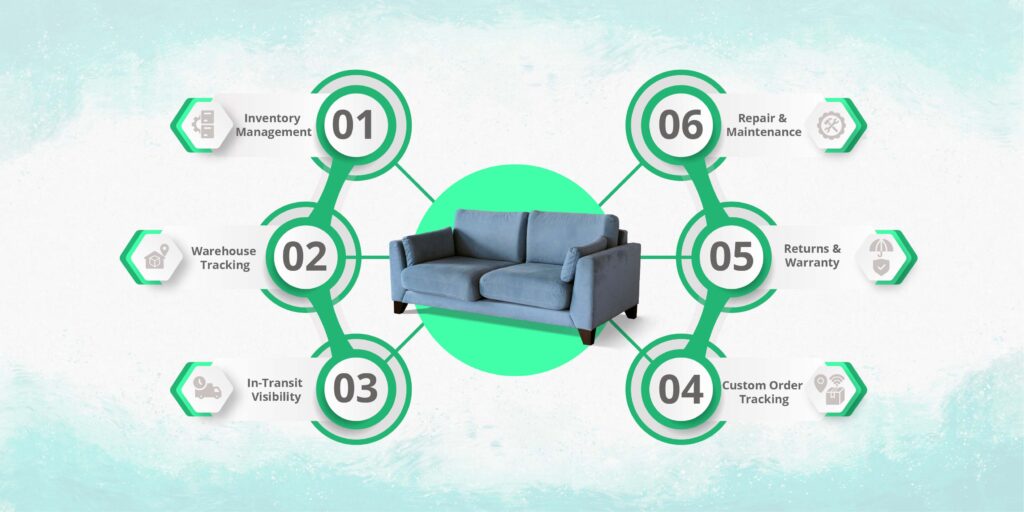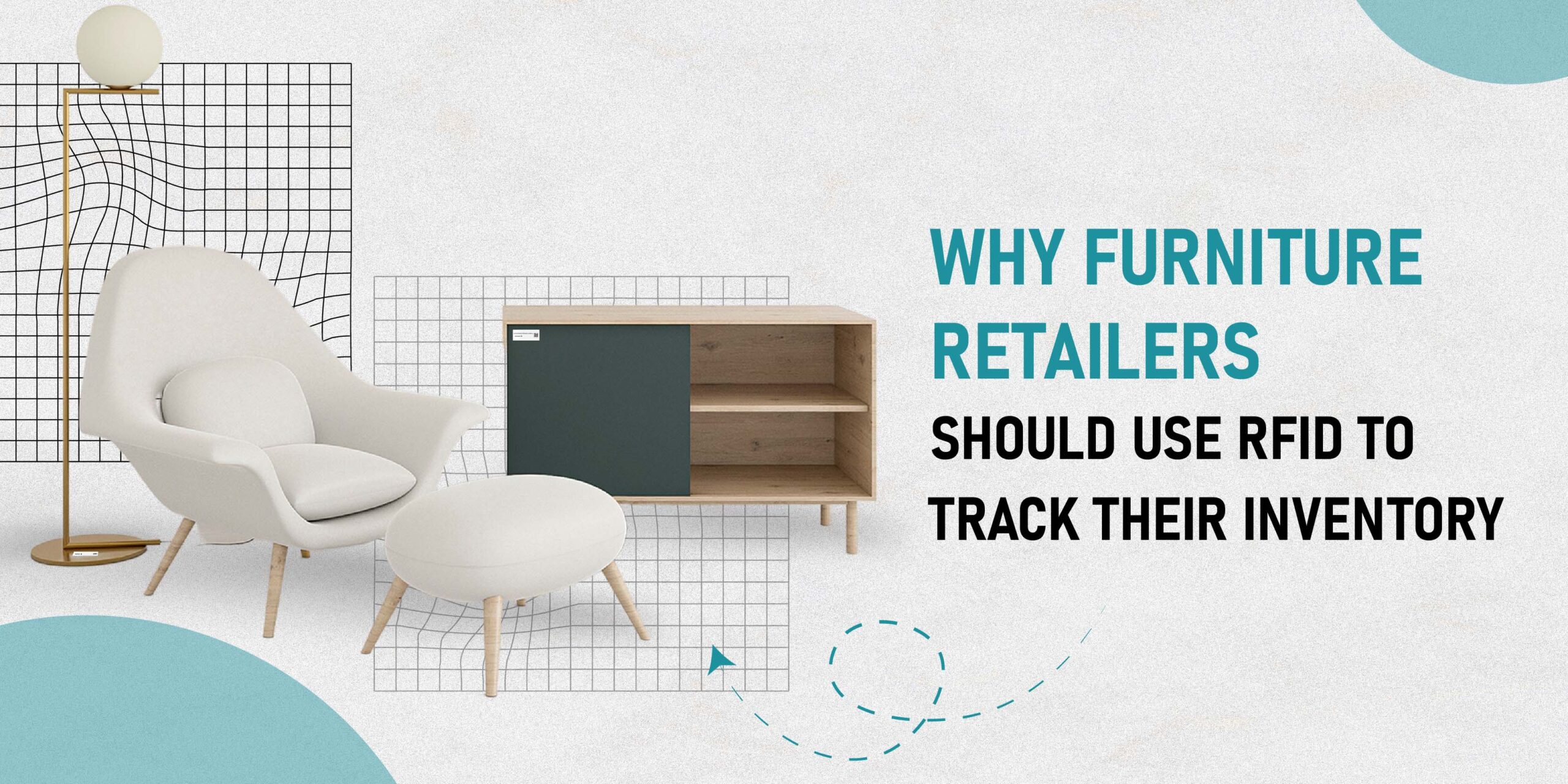Furniture retail faces unique inventory challenges. Traditional tracking methods often fall short, leading to lost sales and frustrated customers. Enter RFID technology – a game-changer for furniture retailers. As a leading solution in RFID in retail, it offers unparalleled accuracy, efficiency, and visibility from the showroom to the warehouse. Let’s explore why RFID is becoming essential for modern furniture inventory management.
The Current State of Inventory Management in Furniture Retail
Many furniture stores still rely on traditional methods like manual counting or barcode scanning. While these methods have served us for years, they come with significant drawbacks:
- Time-consuming and labor-intensive
- Prone to human error
- Difficult to maintain real-time accuracy
- Limited visibility across multiple locations
These limitations can lead to stockouts, overstocking, and ultimately, unhappy customers.
RFID (Radio Frequency Identification)
RFID uses radio waves to identify and track tags attached to objects. Unlike barcodes, RFID tags don’t need line-of-sight to be read, and multiple tags can be scanned simultaneously. This means faster, more accurate inventory counts with less effort.
Key Benefits of RFID for Furniture Retailers
1. Improved inventory accuracy
- Real-time visibility: Know exactly what’s in stock, where it is, and when it needs replenishing.
- Reduced human error: Automated scanning minimizes mistakes in inventory counts.
2. Enhanced operational efficiency
- Faster stocktaking: What used to take days can now be done in hours.
- Automated replenishment: Set up alerts when stock levels are low.
3. Better customer experience
- Reduced out-of-stock situations: Never disappoint a customer with an unavailable item.
- Improved product availability information: Confidently tell customers when an item will return in stock.
4. Loss prevention and shrinkage reduction
RFID enables furniture retailers to easily track items throughout stores and warehouses, quickly identifying inventory discrepancies. This enhanced visibility helps pinpoint potential theft or misplacement, significantly reducing losses and improving asset protection. RFID implementation leads to more accurate inventory records and a healthier bottom line.
5. Streamlined supply chain management
RFID revolutionizes supply chain management by tracking items from manufacturer to showroom. This real-time visibility optimizes ordering processes, reduces excess inventory, and improves delivery time predictions. Furniture retailers can manage warehousing more efficiently, ensure popular items stay in stock, and respond better to market demands.
6. Data-driven decision making
RFID provides valuable data on product performance and customer preferences, enabling smarter inventory decisions. Retailers can forecast trends accurately, optimize stock levels, and improve store layouts. This data-driven approach helps identify fast and slow-moving items, allowing for strategic adjustments that boost sales performance and customer satisfaction.
TagMatiks Retail RFID Software for Retailers
TagMatiks Retail offers a comprehensive RFID solution for retail designed specifically for furniture retailers, seamlessly integrating with existing systems to provide real-time inventory visibility, automated alerts, and insightful analytics. Its features include efficient RFID-based cycle counting, quick RFID printing workflows, precise inventory locating, and support for various RFID devices. This powerful RFID retail system streamlines inventory audits, simplifies tagging processes, aids in item location, and offers hardware flexibility. By going beyond basic tracking, TagMatiks Retail transforms furniture retail operations, enhancing inventory accuracy and customer experience in today’s competitive retail landscape.
Specific Applications of RFID in Furniture Retail

1. Showroom inventory management: RFID enables real-time tracking of display items and stock in showrooms. This ensures accurate information about available products, enhancing customer service and preventing disappointing out-of-stock situations.
2. Warehouse tracking: RFID streamlines the management of large storage areas, providing instant visibility of stock levels and locations. This improves picking efficiency, reduces errors, and optimizes space utilization in furniture warehouses.
3. In-transit visibility: RFID tags on shipments allow real-time tracking from manufacturer to store. This improves delivery estimates, reduces lost shipments, and enables proactive problem-solving for any shipping delays.
4. Custom order tracking: RFID facilitates tracking of made-to-order furniture throughout the production process. This allows for accurate updates to customers, efficient resource allocation, and timely completion of custom orders.
5. Returns and warranty management: RFID simplifies the return process by quickly identifying and verifying products. It also helps in tracking warranty information, ensuring efficient handling of claims and improved customer satisfaction.
Overcoming Implementation Challenges
While the benefits of RFID are clear, implementation can seem daunting. Here’s how to address common concerns:
1. Initial costs and ROI considerations: While there is an upfront investment, the long-term savings in labor and improved sales often provide a quick ROI.
2. Staff training and adoption: User-friendly systems like TagMatiks Retail make training straightforward and encourage staff buy-in.
3. Integration with existing systems: Modern RFID solutions are designed to work with your current inventory management systems.
4. Choosing the right RFID solution: Look for providers with experience in furniture retail and a track record of successful implementations.
Case Study: City Furniture
One of our clients, City Furniture, has seen remarkable improvements after implementing TagMatiks Retail:
City Furniture leverages RFID technology to automate inventory management workflows including cycle counting their retail showrooms. This implementation has significantly enhanced their inventory accuracy, drastically reduced the time spent on inventory counts, and improved their overall operational efficiency.
The RFID solution has also positively impacted City Furniture’s sales performance. By maintaining better stock visibility and availability, they’ve been able to meet customer demands more effectively, leading to increased customer satisfaction and improved sales figures.
Conclusion
In today’s competitive retail landscape, furniture retailers can’t afford to rely on outdated inventory management methods. RFID technology offers a powerful solution to streamline operations, improve customer satisfaction, and boost your bottom line. RFID in retail is revolutionizing how inventory is managed, ensuring accuracy and efficiency. By embracing RFID solutions in the retail industry, furniture retailers can stay ahead of the curve and meet the evolving needs of their customers.
